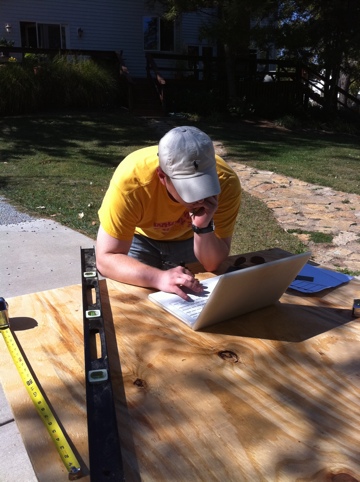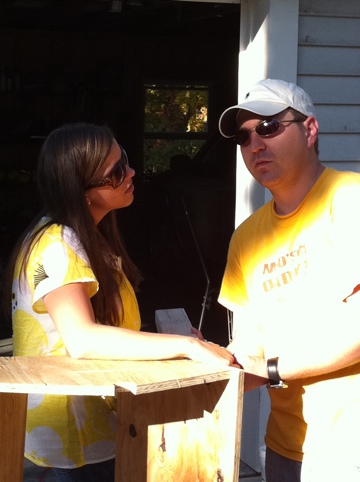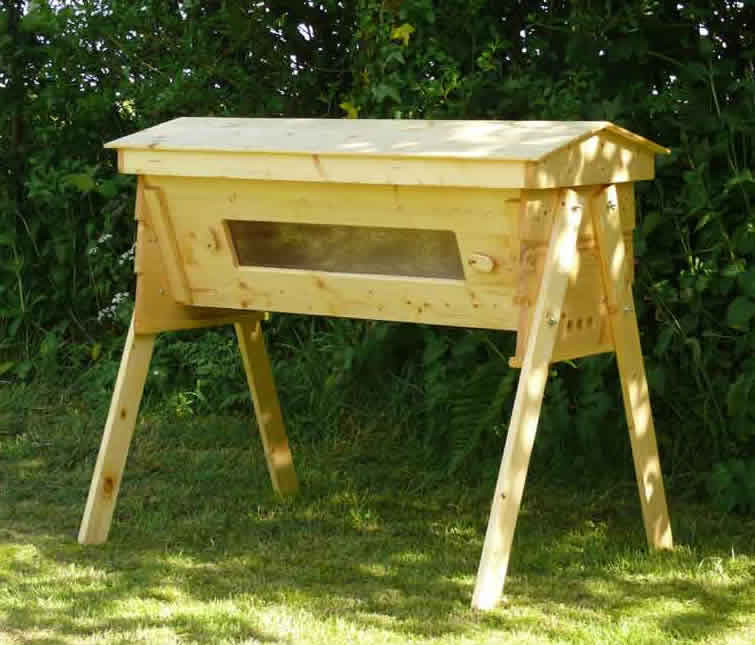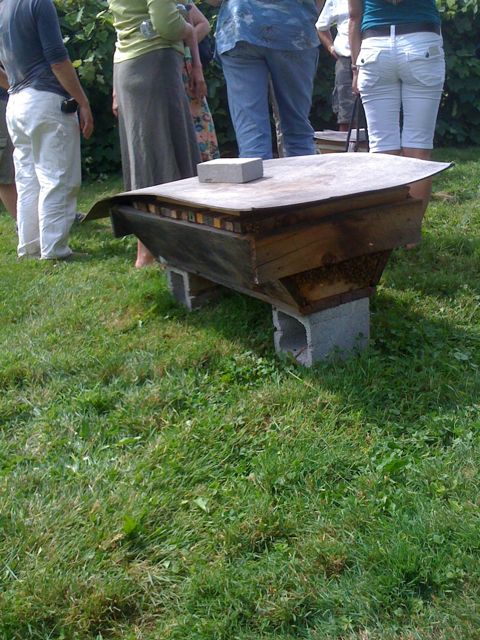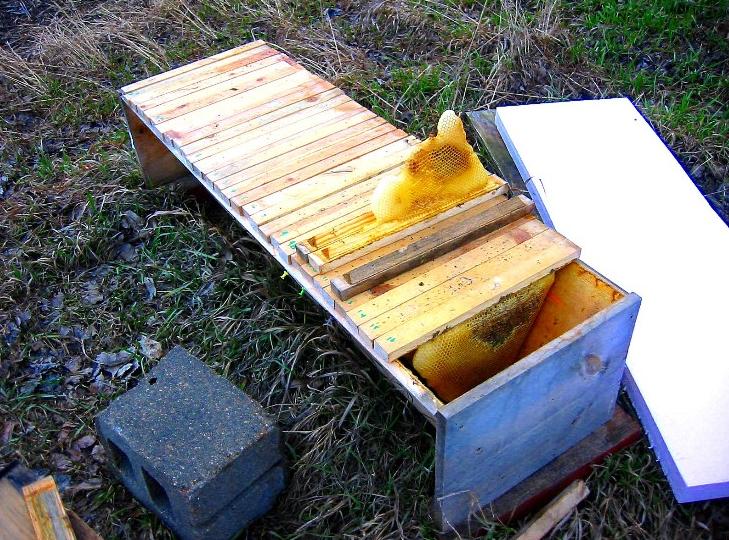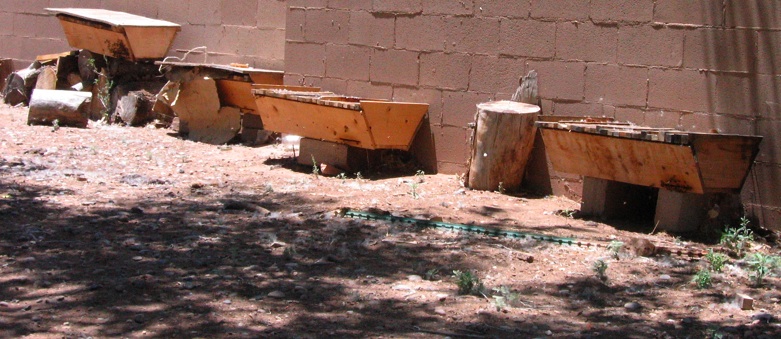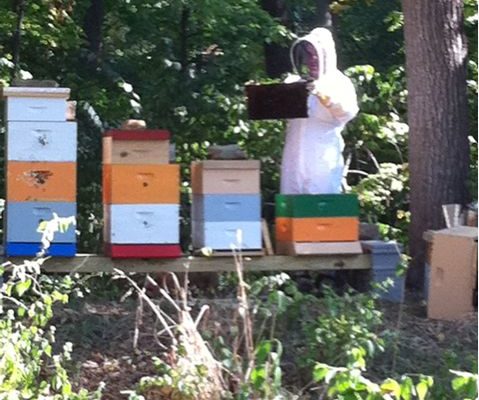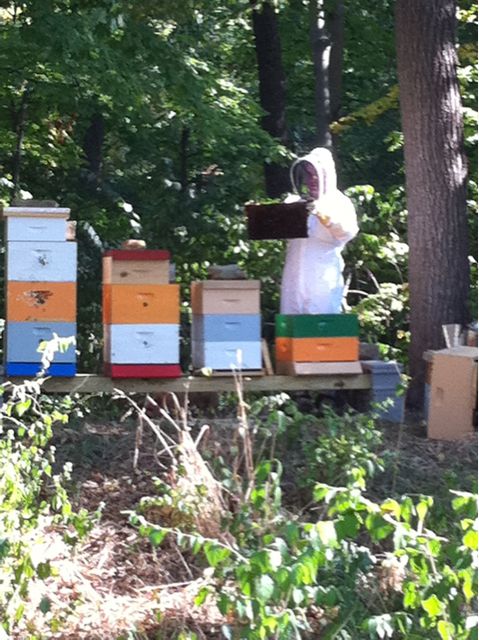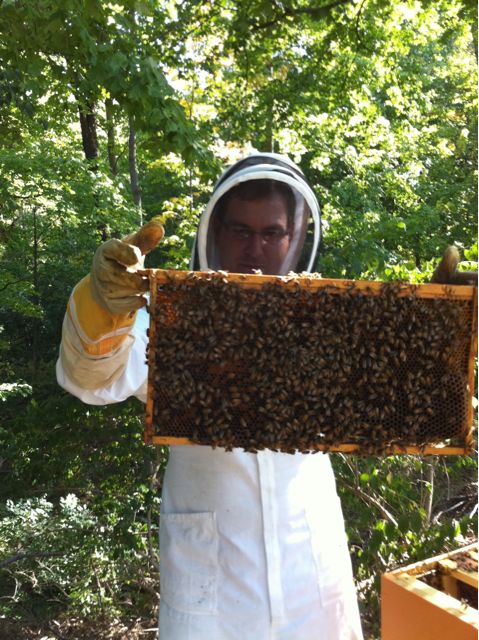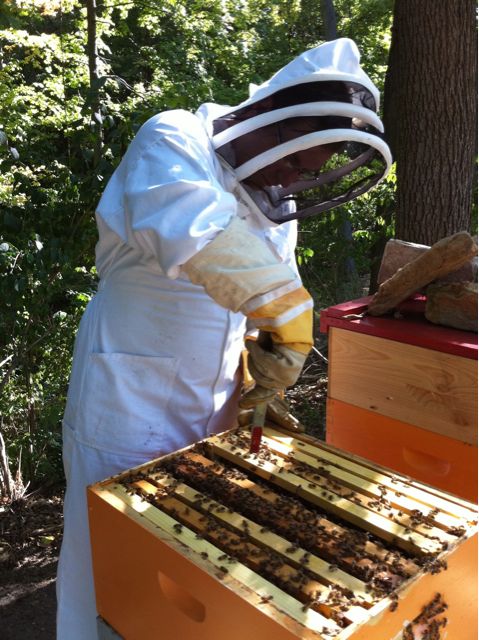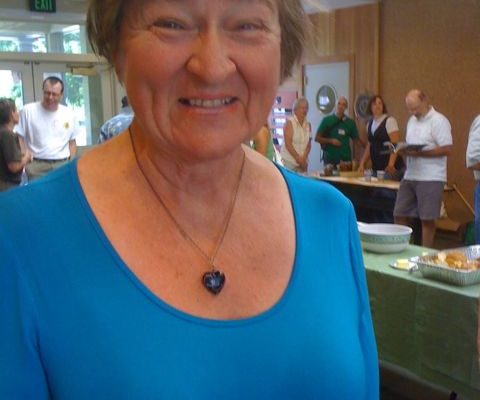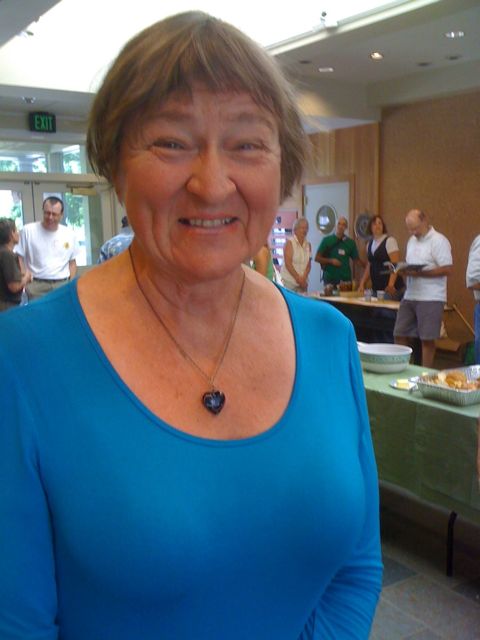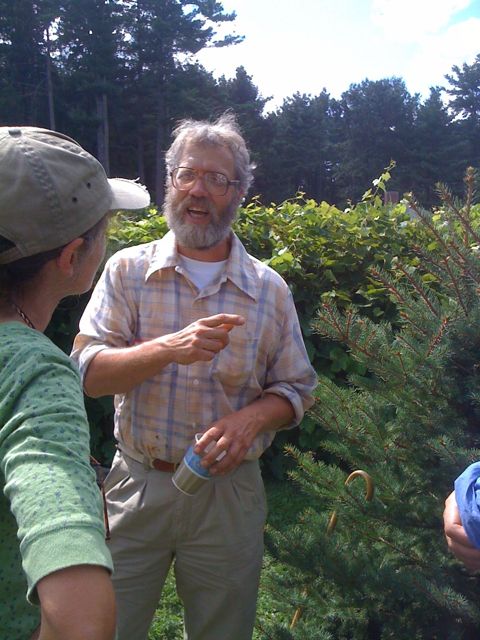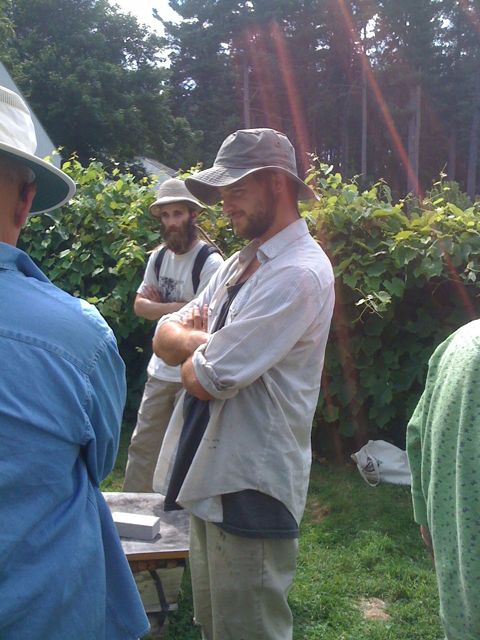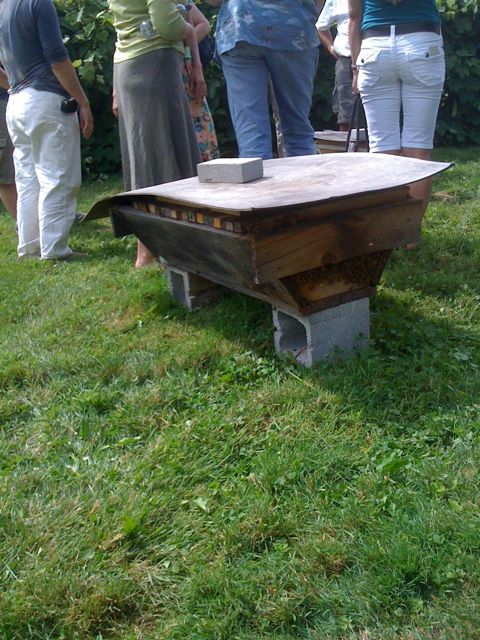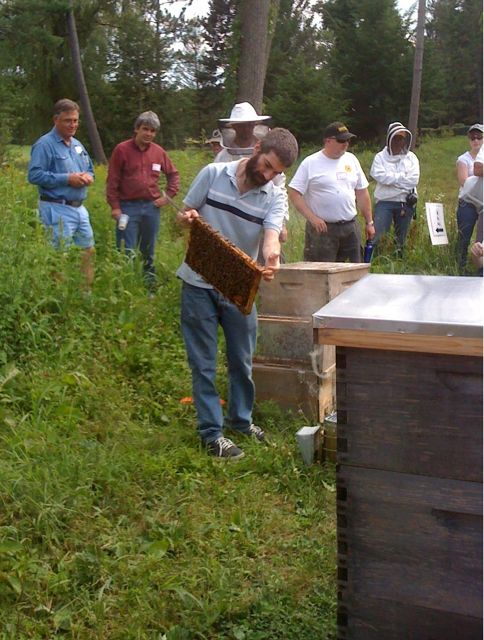Some days I move around a lot with little to show for it. Yesterday was one of those days.
I put the finishing touches on the three remaining swarm-lure boxes: I added frames of drawn comb, and I drilled holes in the lids of three used plastic medicine bottles into each of which I put two cotton balls—I sprinkled three to five drops of lemongrass oil on one cotton ball; with the other cotton ball, I soaked up my melted swarm lure…a mix of beeswax, almond oil, and lemongrass oil. I smeared the swarm lure mixture on the outside of each box and at the entrances. Then I added the used-up cotton to the vials, closed them up with their lids, and tucked the vials inside the boxes (the holes in the vial lids allows the smell of lemongrass to waft out of the box and attract the bees).
I still haven’t hung the things, though. It’s raining.
Then, I got the top-bar hives ready for bees…which means I added all the bars. Then I knocked the bars off because I wasn’t careful with the lid. So I replaced the bars. I immediately knocked them askew again. You see how it goes.
All of these little chores meant a lot of walking around the yard carrying stuff into the basement and out of the basement and into the kitchen and out to the garage and back to the yard. Then I’d forget something and have to go find it somewhere. It was tiring. Some days I’m unbelievably disorganized.
I had to take a nap.
Then, last night as the rain began and the wind whipped up, I realized I’d not replaced the large rock that anchors the Amazons’ hive cover, so I hauled out there in the rain and put that rock on top.
Bees arrive on Friday. If I don’t get more focused soon, they’re gonna wear me out.



